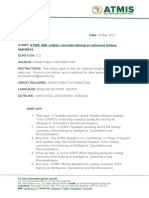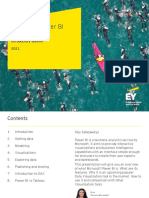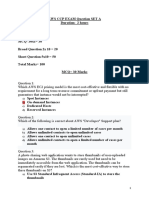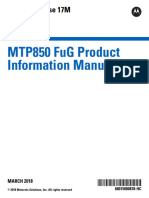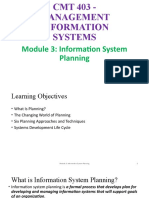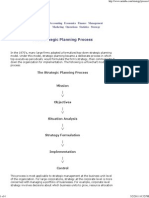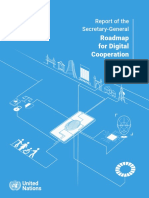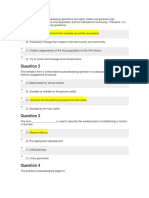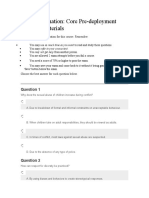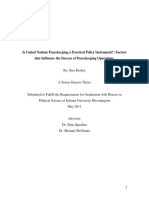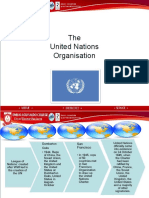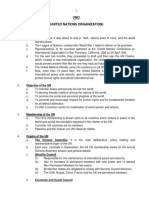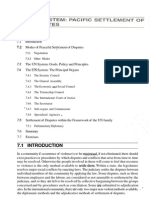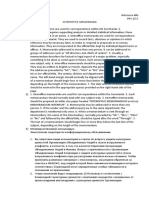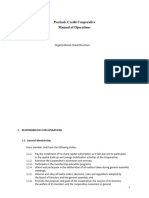0% found this document useful (0 votes)
243 views16 pagesUN Peacekeeping Quiz
This document contains 32 multiple choice questions about various aspects of United Nations peacekeeping operations, including:
- When the UN began developing standardized senior mission leadership training
- The guiding principle for conflict and post-conflict situations
- Basic measures for maintaining a healthy peacekeeping mission
- Responsibilities for ensuring personnel comply with UN standards
- Key components required for deploying any peace operation
The questions cover topics like national support elements, the duties of UN police, decisions regarding the use of armed forces, UN headquarters location, the three basic principles of UN peacekeeping, and rules of engagement.
Uploaded by
carlosCopyright
© © All Rights Reserved
We take content rights seriously. If you suspect this is your content, claim it here.
Available Formats
Download as DOCX, PDF, TXT or read online on Scribd
0% found this document useful (0 votes)
243 views16 pagesUN Peacekeeping Quiz
This document contains 32 multiple choice questions about various aspects of United Nations peacekeeping operations, including:
- When the UN began developing standardized senior mission leadership training
- The guiding principle for conflict and post-conflict situations
- Basic measures for maintaining a healthy peacekeeping mission
- Responsibilities for ensuring personnel comply with UN standards
- Key components required for deploying any peace operation
The questions cover topics like national support elements, the duties of UN police, decisions regarding the use of armed forces, UN headquarters location, the three basic principles of UN peacekeeping, and rules of engagement.
Uploaded by
carlosCopyright
© © All Rights Reserved
We take content rights seriously. If you suspect this is your content, claim it here.
Available Formats
Download as DOCX, PDF, TXT or read online on Scribd
/ 16

